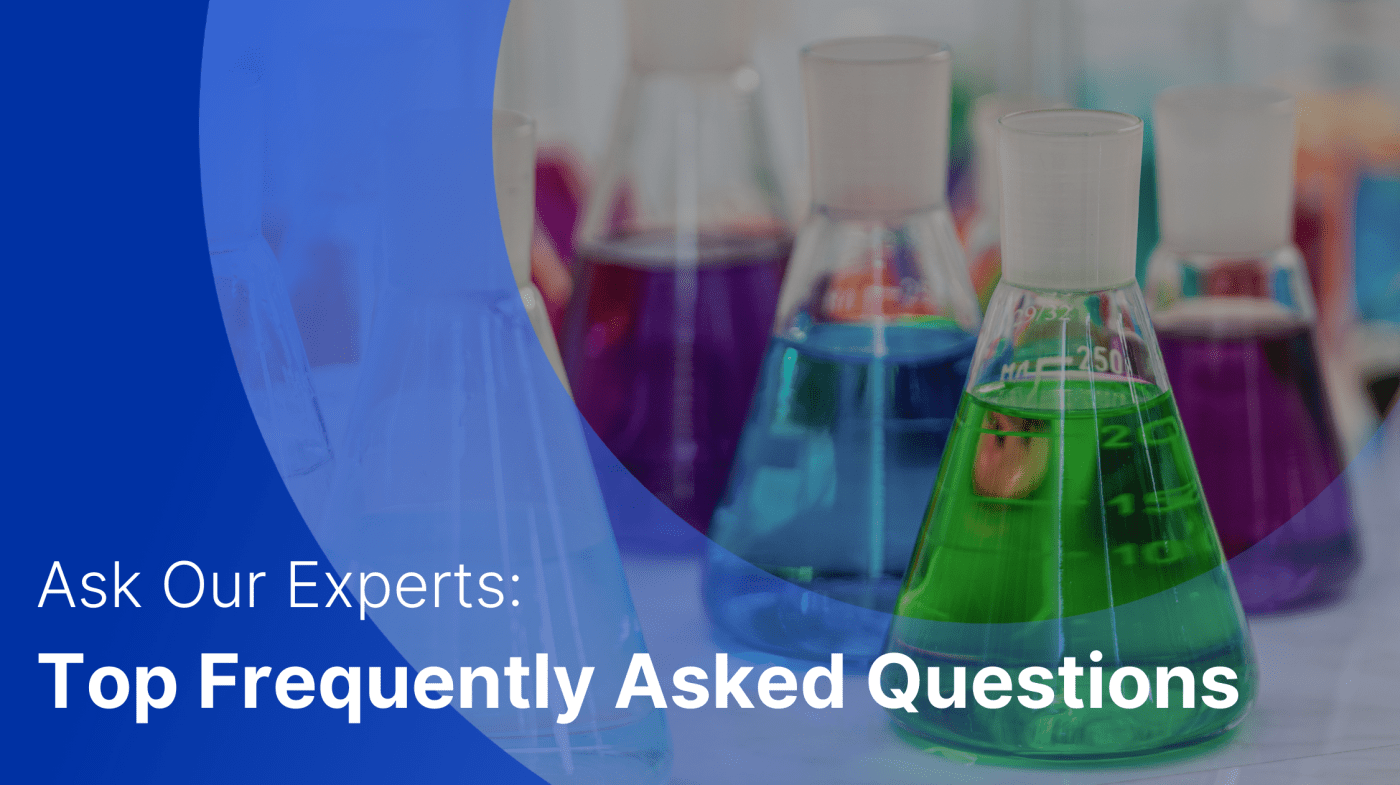
Ask Our Experts: Top Frequently Asked Questions on PFAS

This blog was originally posted on 15th July, 2024. Further regulatory developments may have occurred after publication. To keep up-to-date with the latest compliance news, sign up to our newsletter.
At Compliance & Risks, we help the world’s leading brands to monitor and manage global regulations and standards via C2P, our comprehensive SaaS platform. We enable you to monitor, assess and prove your products’ compliance, protecting your brands and helping drive growth.
In our new ‘Ask our Experts’ series, we bring you some of the pressing questions asked by your peers on a hot compliance topic. This month, we break down some of the top frequently asked questions on PFAS in the US.
For more on this topic, check out our whitepaper ‘PFAS – A Year in Review: U.S. Key Regulatory Developments in 2023‘.
USA – PFAS
Question 1:
For the US EPA TSCA Reporting and Recordkeeping Requirements for Perfluoroalkyl and Polyfluoroalkyl Substances, does that only apply to chemical manufacturers of PFAS (i.e., literally, a chemical company)? Do entities that use PFAS materials like PTFE need to report as well? In other words, does the EPA qualify users of PFAS in articles as “Manufacturers”, in which case reporting is then required? Also, when is the deadline for reporting?
The US TSCA Reporting rule’s key consideration is the manufacture and import of any PFAS substances defined as:
Environmental Protection Agency (EPA) has defined “PFAS” as a chemical substance that contains at least one of the following three structures:
- R-(CF2)-CF(R′)R″, where both the CF2 and CF moieties are saturated carbons.
- R-CF2OCF2-R′, where R and R′ can either be F, O, or saturated carbons.
- CF3C(CF3)R′R″, where R′ and R″ can either be F or saturated carbons.
- Do entities that use PFAS materials like PTFE need to report as well? Yes, but only if the company manufactured or imported for use the PTFE materials matching the rule’s definition of “PFAS”. If the PTFE was purchased by, but not imported or manufactured by, the company, there would be no requirement for that company to report. The key requirement is “manufacture or import”.
- The text in the preamble of the TSCA reporting rule states that: “Anyone who has manufactured (including imported) a PFAS for a commercial purpose in any year since January 1, 2011, is covered by this rule.” and then clarifies specifically the exemption from reporting: “Persons [or a company] who have only processed, distributed in commerce, used, and/or disposed of PFAS are not required to report under this rule, unless they also have manufactured PFAS for a commercial purpose.” [See Federal Register / Vol. 88, No. 195 / October 11, 2023 at Page 70519].
The reporting period is From Nov 12, 2024 to May 08, 2025.
Question 2:
As per my understanding, companies can submit the PFAS report via the Chemical Safety and Pesticide Programs (CSPP) program in Central Data Exchange (CDX). Could you please confirm if this is correct?
Furthermore could you please confirm if non-US citizens can open an account in the CSPP program for a US registered company and submit the report? If so, which role should the person select?
The information in the preamble of theToxic Substances Control Act Reporting and Recordkeeping Requirements for Perfluoroalkyl and Polyfluoroalkyl Substances indicates or suggests that foreign suppliers may not directly use the Central Data Exchange (CDX). It appears that an intermediary (tertiary) is required.
It may be understood generally that an individual who is not an employee or agent of a company cannot act on behalf of that company or others. In the rule we are referring to, the Environmental Protection Agency (EPA) requires that foreign-nation companies ask a tertiary company manufacturing PFAS to report directly to the Environmental Protection Agency (EPA). This is explained in text below as a way of protecting confidential information.
Additional information is available in the Environmental Protection Agency (EPA) Central Data Exchange (CDX) FAQs. The Central Data Exchange website is available here. The Central Data Exchange (CDX) FAQ is available here.
I have included below parts of the text of the rule for reference. Note that Chemical Safety and Pesticide Program (CSPP) is a Pesticide database application. The Chemical Information Submission System (CISS) would appear to be the application required for connection to Central Data Exchange (CDX).
Within CDX, CISS [a database EPA has developed, see below] is available under the ‘‘Submission for Chemical Safety and Pesticide Program (CSPP)’’ CDX flow.” “EPA is developing a rule-specific reporting tool within CISS, which reporters must use to submit the required information. This tool will be available in CISS prior to the start of the reporting period”
“EPA is requiring all information to be submitted electronically, similar to the requirements established in 2013 for submitting other information under TSCA (see 40 CFR 704.20(e)). Reporters must use EPA’s Central Data Exchange (CDX), the Agency’s electronic reporting portal, to submit all information under this rule. EPA developed the Chemical Information Submission System (CISS) for use in submitting data electronically to the Agency for TSCA sections 4, 5, 6, 8(a), 8(b), 8(d), and 8(e) and Title VI.”
And on foreign reporting:
“There may be instances where a foreign supplier purchases a mixture, under a trade name, from another company (tertiary company) and does not know the chemical components of the mixture. The foreign supplier can ask the tertiary company manufacturing the trade secret mixture or PFAS within the mixture to directly provide EPA with the correct chemical identity in the reporting tool. In this case, the tertiary company would register with CDX and use the Unique Identifier for Joint Submissions, sent to the tertiary company by the secondary company (i.e., the foreign supplier), to complete the reporting form. Under this scenario, the foreign supplier does not have access to any of the information submitted to EPA by the tertiary company. Likewise, the tertiary company cannot see the information the foreign supplier or the primary company (i.e., the U.S. manufacturer (including importer)) reports to EPA. This way, the confidentiality of information for all parties is protected.”
Question 3:
Regarding Vermont (USA): Regulating Consumer Products Containing Perfluoroalkyl and Polyfluoroalkyl Substances (PFAS) and Other Chemicals, Senate Bill 25 Enacted, 2024:
1. Are medical devices and drugs manufacturers in or out of the scope of the above regulation?
2. If in scope what are they required to do and by when?
It would appear that medical devices and drugs are not within the scope of the restrictions of this Vermont legislation.
This complex Bill – Senate Bill 25 Enacted, now Statute – at § 2494e. DEFINITIONS Sec. (8)(B), declares that Medical Devices are exempt from the definition of “Juvenile Products” used in the text. This indicates that devices that are medical are not subject to the restrictions and prohibitions that apply to other products.
In the text of this bill, Cosmetic products are restricted, and “food and drugs approved by the U.S. Food and Drug Administration” are exempt, so it can be assumed that approved drugs are also not subject to restrictions applied to the specified consumer products.
However, this state bill requires the Agency of Natural Resources, the Agency of Agriculture, Food and Markets; the Department of Health; and the Office of the Attorney General to determine whether “a drug, medical device, or dietary supplement” are property regulated. The Agencies are then, under this Section, to report the Legislature and other Agencies with an “implementation plan” by November 1, 2024. This requirement, if it is fulfilled, may at some point have an effect on the regulation of medical devices and drugs.
(at Sec. 9. IMPLEMENTATION PLAN; CONSUMER PRODUCTS CONTAINING PFAS).
There is no further mention of “medical devices” or “drugs” within the text of the bill.
I have added excerpts from text referred to in the bill and related statutes should this be of use:
§ 2494e. DEFINITIONS Sec. (10) “Medical device” has the same meaning given to “device” in 21 U.S.C. § 321 – which is a definition of a “medical device”, under TITLE 21. FOOD AND DRUGS:
“(h)(1) The term “device” (except when used in paragraph (n) of this section and in sections 331(i), 343(f), 352(c), and 362(c) of this title) means an instrument, apparatus, implement, machine, contrivance, implant, in vitro reagent, or other similar or related article, including any component, part, or accessory, which is–
(A) recognized in the official National Formulary, or the United States Pharmacopeia, or any supplement to them,
(B) intended for use in the diagnosis of disease or other conditions, or in the cure, mitigation, treatment, or prevention of disease, in man or other animals, or
(C) intended to affect the structure or any function of the body of man or other animals, and
which does not achieve its primary intended purposes through chemical action within or on the body of man or other animals and which is not dependent upon being metabolized for the achievement of its primary intended purposes…”
And, “(n) If an article is alleged to be misbranded because the labeling or advertising is misleading, then in determining whether the labeling or advertising is misleading there shall be taken into account in accordance with section 343(r)(6) of this title is not a drug under clause (C) solely because the label or the labeling contains such a statement.”
among other exceptions. (paragraph (n) of this section and in sections 331(i), 343(f), 352(c), and 362(c) of this title).
Your Questions Answered
The above questions were submitted and answered via the “Ask Our Experts” (AOE) button in C2P.
Our customers use AOE to ask about the latest proposed, enacted and amended regulations and mandatory standards applicable to their products and geographies of interest.
When AOE questions can be answered in 30 minutes or less, Compliance & Risks’ subject matter experts answer them at no charge!
To learn more about C2P and how Compliance & Risks’ SMEs can help you with your questions, start a conversation today.
Meet our Experts

Global Regulatory Compliance Team
Our team of experts will elevate your strategic edge by addressing questions about laws and regulations. Fluent in almost 30 languages and backed by an extensive database of 90,000+ sources, our experts bring unparalleled knowledge to the table. Moreover, our expert team is dedicated to educating your organization, fostering better engagement, and ensuring your compliance and risk management strategies are second to none. With our team of seasoned professionals by your side, you’ll gain a competitive edge in navigating the complex landscape of compliance management, gaining deeper insights and valuable guidance


